#sherlock x mary
Explore tagged Tumblr posts
Text

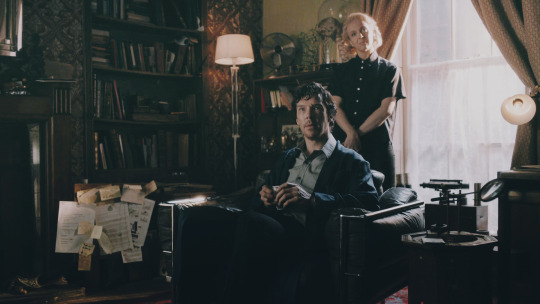
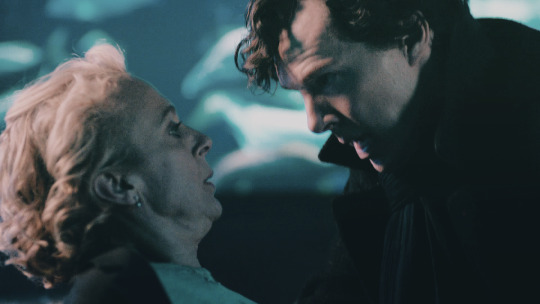
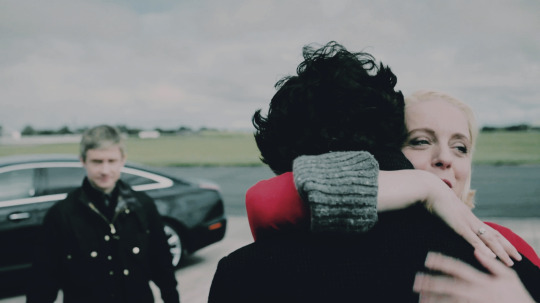

Thinking about ✨Them✨
#sherlock#sherlock holmes#mary watson#bbc sherlock#sherlock bbc#benedict cumberbatch#not tagging the other actor bc of reasons#my edit#rarepair#mary x sherlock#sherlock x mary#marylock
96 notes
·
View notes
Text

The 10th chapter of The Adventure of the Hertfordshire Elopement is up now!
#sherlock holmes#mary bennet#granada holmes#pride and prejudice 2005#pride and prejudice#sherlock x mary
3 notes
·
View notes
Text
I love the idea of Mary and Sherlock being BFFs.
This is why I love their dynamic so much in RDJ Sherlock Holmes. Because even thought they struggle at the beginning they are so supportive of each other eventually
Same goes for BBC Sherlock. This is why I am still mad at the twist season 4 gave the relationship dynamic
Mary and Sherlock against John. Them being the clever ones, John being dumb. How is such a dynamic still fun?
3 notes
·
View notes
Text
Please SOMEBODY make it happen!!!!
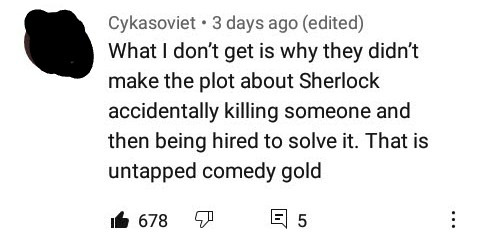
#sherlock holmes#bbc sherlock#sherlock & co#john watson#benedict cumberbatch#credit to the person who made this#sherlock fandom#sherlock bbc#sherlock and john#johnlock#dr john watson#james moriarty#sherlock and co#mystery#fanfic authors#make it happen#this would be so funny#this would be fun#comment section#youtube comments#fanfic ideas#fanfic inspo#fanfic inspiration#fanfic in progress#mycroft holmes#enola holmes#dr watson#holmes x watson#mary watson
1K notes
·
View notes
Text


SH&co’s charachters unlocked⭐️
Some of them aren’t in the podcast yet but I KNOW THEY WILL BE LIKE THIS ‼️
#my art#my illustration#sherlock holmes#johnlock#sherlock fanart#sherlock fandom#john watson#sherlock#sherlock x john#sherlock & co#mary morstan#mycroft holmes#jim moriarty#inspector lestrade
244 notes
·
View notes
Text

co-parenting<33
#screaming into the void#i just think that.#yeah.#my art#the @ is my insta#art#fanart#fanartist#sherlock#bbc sherlock#sherlock bbc#sherlock holmes#john watson#benedict cumberbatch#martin freeman#johnlock#could also be gen#live your truth#parentlock#rosie watson#mary morstan#warstan#i miss them sorry.#they see her in rosie and i fall to my knees#sherlock x john#sherlock holmes x john watson#sherlock holmes/john watson#sherlock/john
1K notes
·
View notes
Text
Listen. I’m going to hold your hand and say this gently…
Mary said. “The man we both love.”
You may be thinking. ‘Yeah… obviously. What does that have to do with anything?’
Consider this. She didn’t say, “the man I love, your best friend.”
I hear you saying ‘she probably meant platonic love. As did the writers.’
But she didn’t say that did she? With writers as intentional as these- the same writers who’ve been playing the long game and dropping hints about the east wind since the beginning-
They didn’t write “my husband, your companion”
They didn’t have her say, “the man I love, and the man you like-“
She didn’t say. “The man I love romantically, the man you love platonically”
She said “the man we both love.”
As if she knows their love is the same. As if she can see it in Sherlock’s eyes- she knows. I am telling you- SHE KNOWS.
She knows what it looks like to love John Watson. She knows what it feels like. She cares about Sherlock ( she did shoot him- mixed messages- I grant you- ) but she cares for John more.
What if the roles where reversed? What if it was Mary who caught Sherlock living a lie? Would he have done the same? Despite Mary being a friend, would he not have shot her, knowing that she would surly tell John and ruin everything he’s built?
Is that why Sherlock was not as mad as he maybe should have been? Is that why he insisted John trust her? Because he understood just how far she would go for John.
He didn’t just know. He understood. He related to her.
But he knew that John mattered more to him. He couldn’t let her lie- not to John. And I think Mary knew that.
They where friends. And they where friends with a mutual understanding that John meant more than life or death to either of them.
And then she’d left that video for Sherlock.
Why would she leave that video if she didn’t know Sherlock would do anything she told him to, if it would help John?
Could be platonic…
But she says these things. She says that she knows Sherlock would do anything for John.
Could still be platonic…
BUT THEN SHE SAYS
“The man we both love.”
She was not running out of time when she made that video. It was a video she felt she had to make, just in case.
She could have elaborated.
She didn’t.
There was nothing to elaborate.
She knew her and Sherlock loved John the same way. She knew that he knew.
It’s one of my favorite things about this show.
Why say something the characters already know to be true? Why force a confession that everyone already believes before the words even cross their lips.
#bbc sherlock#sherlock bbc#sherlock holmes#bbc sherlock holmes#sherlock fandom#sherlockbbc#johnlock#john watson#dr john watson#bbc john watson#mary morstan#bbc Mary Morstan#gay sherlock holmes#sherlock x john#johnlock bbc#john h watson
83 notes
·
View notes
Text
Gay Easter Eggs in BBC Sherlock
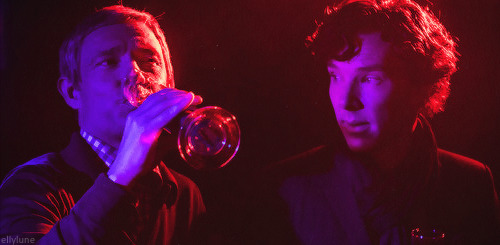
(I trust the above requires no explanation.)
Perhaps someone has done this before, but I wanted to put together a compilation of gay easter eggs in the show that I’ve seen other people point out and/or have thoughts on myself. So here it is!
When I say “easter eggs,” I’m thinking of small clues that the show creators included in the set designs, music choices, and other details of the show to reference that Sherlock and John are in love. I’m thinking of things you could miss at first, especially little clues that often require a bit of extra information or require observations across episodes to understand.
Of course, there’s also lots of subtext woven into the show, moments where interpreting the dialogue or visuals in a certain way tells us something about Sherlock, John, and/or the state of their feelings for one another. I’m not sure if I can clearly define “subtext” versus “easter eggs” and explain what distinguishes them, but at least to me, several of the things I’ve listed here seem a bit different from what people often refer to as subtext. Maybe subtext is about uncovering the layers to a piece of dialogue or an action that takes place in plain sight and seeing how that impacts our interpretation of the story, but easter eggs are about spotting smaller, hidden details. I’m not trained in literary or film studies, though, and I’m not trying to be doctrinaire about this at all! This list is just for fun, anyway. (The above image might not actually count as an easter egg, but I couldn’t resist including it here. Indulge me.)
The more I read about this show and the harder I look, the more I think that hardly anything is there on accident. All these easter eggs must have been included on purpose. The creators knew they were telling a love story all along.
I’ve linked to the posts where I initially saw people point these out or to other good sources, and for some of these I’ve added my own commentary/observations/interpretations. I’m sure there are many other easter eggs that I’ve missed! What have you spotted?
John’s PIN in TBB – When John tries to pay for his groceries at the beginning of the episode, we see that his PIN is 743. In ASIB, Irene’s code to unlock her phone is SHER, which would be 7437 on a phone keypad. So, John’s PIN is a clue that he is or will be in love with Sherlock. Source: @loudest-subtext-in-tv, here.
Shaftesbury Avenue, 20m from Piccadilly Circus in TBB – While investigating in Chinatown, Sherlock and John bump into each other at what used to be a cruising spot for gay men in London. Source: @the-signs-of-two, here.
Archer the American in ASIB – In the scene where the American CIA agents try to get Sherlock to open Irene’s safe, the head CIA agent pressures Sherlock by threatening to have one of his men shoot John. The agent says: “Mr. Archer, on the count of three, shoot Dr. Watson.” Ordering someone named “Archer” to shoot John could be a reference to Arthur Conan Doyle’s poem “The Blind Archer,” which is about Cupid and describes Cupid shooting two men who sound an awful lot like Sherlock and John. Source: couldntpossiblycomment, here.
“¿Dónde Estás, Yolanda?” in TEH – The song that plays during the scene with John and Sherlock’s disastrous reunion at the Landmark restaurant is a cover of the song “¿Dónde Estás, Yolanda?” performed by the band Pink Martini. The Spanish lyrics to this song are about searching for a long-lost lover, which is fitting for the scene where John sees Sherlock again for the first time since his fall. Notably, the creators didn’t use the first of the two versions of this song that Pink Martini has released. The band’s first version appears on their 1997 studio album Sympathique and features a man singing about a woman. Instead of using that version, the creators used the version from Pink Martini’s 2011 compilation album A Retrospective, in which China Forbes performs most of the vocals. So, the creators deliberately chose a remade version of the song in which a woman sings about a woman. They chose a gay song about searching for a long-lost lover for Sherlock and John’s reunion. abrae (@tea-and-liminality on tumblr) has a meta with more to say about the use of this song here.
John’s “oscillation on the pavement” in TEH – In TSOT, John observes a potential client standing outside 221B and trying to make up her mind as to whether to come in. Sherlock tells John “I’ve seen those symptoms before. Oscillation on the pavement always means there’s a love affair.” In the previous episode, John came to visit Sherlock at 221B but hesitated on the pavement outside, staring at the door and trying to decide whether to go in. Sherlock’s comment, “I’ve seen those symptoms before,” is a hint that we, the audience, have also seen those symptoms before—with John in the previous episode. Source: @bidoctor, here. (I saw someone else point out that last part about Sherlock’s hint to the audience, but I can’t find that post, sorry!)
Lilac dresses in TSOT – While planning John and Mary’s wedding, Sherlock chooses lilac-colored dresses for the bridesmaids. When John tells Sherlock that he likes the bridesmaids in purple, Sherlock pointedly corrects him by stating that the dresses are lilac. Apparently, “In Victorian times, giving a lilac meant that the giver is trying to remind the receiver of a first love.” So by dressing the bridesmaids in lilac, Sherlock is trying to remind John of his first love: himself, Sherlock. My heart breaks. Source: @asherlockstudy, here.
Putting the horns on Mary and Janine in TSOT and HLV – In TSOT, there’s a shot where Mary gives Sherlock and John a thumbs up before they head out on a case. The way Mary is standing, the horns on Sherlock’s cow skull thing on the wall behind her are placed right over her head. (I always thought this shot looked pretty weird, but now I see that it must have been intentional!) In the HLV scene with Janine at 221B, there’s a moment when Janine steps in front of John in the frame to kiss Sherlock, and her movement positions the horns right over her head. “Putting the horns” on someone means cheating on them. So in both cases, placing the horns right above Mary’s and Janine’s heads indicates to the audience that Sherlock and John are the real relationship in this show. Source: this post from multiple users on the @sherlockmeta blog.
The architecture of Sherlock’s mind palace in HLV – In the mind palace scene after Mary shoots Sherlock, the architecture of Sherlock’s mind palace is based on locations from ASIP. Sherlock literally built his mind palace out of places from his first case with John, illustrating that his relationship with John is what grounds him and that it means everything to him. abrae has some very helpful screencaps of this here (and I would recommend that whole meta, btw!)
The glasshouse scene in TAB – In TAB, the Victorian John tries to ask Sherlock about his sexuality and sexual history while they’re sitting in a glasshouse. In Victorian Britain, “glasshouse” was another term for a military prison. So John, a military veteran, asks Sherlock about his sexuality in a setting that represents where he would have been sent if he had acted upon his homosexual desires at a time when homosexuality was criminalized. Source: @haffieliesel, here.
What do we say about coincidences? The universe is rarely so lazy.
#johnlock#bbc sherlock#sherlock#tjlc#meta#gay easter eggs#subtext#sherlock x john#sherlock holmes#john watson#mary morstan#janine#janine hawkins#irene adler#tbb#asib#teh#tsot#hlv#tab#the blind banker#a scandal in belgravia#the empty hearse#the sign of three#his last vow#the abominable bride#the universe is rarely so lazy
168 notes
·
View notes
Text
Waltz Into My Heart
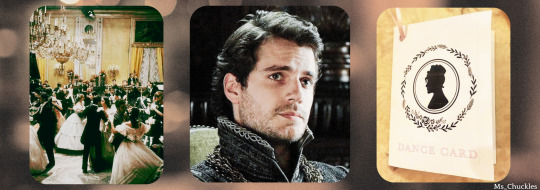
Pairing: Sherlock Holmes x F!Reader WC: ~350 Warnings: Fluff | Some Bridgerton-inspired themes | Unbeta'd A/N: Dedicated to @thereoncewasagirlnamedjane for all the love she showered on The Curious Affairs of Mr. Holmes. I never really thought I'd write for Sherlock again if not for you, love. So, thank you, my dearest Janie, for all the beautiful love notes and for encouraging me to write for him. ✨ Just a tiny spark of inspiration for now… but who says it won't grow into something more? 🤭🩷 Note: Do not Steal, Copy, or Plagiarize any part of my work! I do not consent to AI scraping my work. Banner and Divider credits to me. Photo credits to Pinterest. Thank you :) Check out my other works: Masterlist
Indulge Away!

Sherlock despised many things.
Balls. Grand declarations. Crowds. Boastful dumb twats.
Perhaps he was more pliable on matters of friendship, for he wouldn't otherwise subject himself to this madness if not for Watson, who was currently dancing with Lady Mary.
And boy, was Sherlock grateful he'd yielded to his friend's incessant pursuit! From the moment he first glimpsed you in passing, Sherlock had been quite unable to look away, and it wildly bothered him.
You stood at the farthest corner, turned from the room, hiding behind a gigantic vase--concealing yourself mostly from your mother, from what he gathered. He realized you were the Viscount's third daughter based on introductions, and your mother was eager to marry you off along with your sisters. It didn't sit well with Sherlock. He could also tell you hated being there.
Sherlock waited for a long moment, rationalizing himself not to gaze at you which he failed to do so. When he couldn't resist, he walked toward you. He told himself he was merely curious about what you were scribbling in your dance card, and not because he needed to be close to fend off the suitors swarming you.
It was highly improper to approach you without an introduction--but damn propriety.
"Mr. Picklethwaite?" Sherlock read upside-down, placing his palms on the console table and leaning forward.
Startled at the sudden intrusion, you looked up at him, shocked, lips parted. Sherlock knew the moment recognition dawned in your eyes as to who he was. His heart fluttered delightfully.
"I suppose Lord Tiddlewick shall take the next?" Sherlock murmured, stepping beside you, eyes sparkling with amusement. You'd figured he knew what you were doing--filling your dance card with fictitious names.
You let out a nervous chuckle. "I can't take this anymore," you whispered, gently pleading with him to keep your secret.
Goodness, you smelled divine, and it was numbing his senses. You decided to torment him further by biting your lip, waiting anxiously.
He internally groaned.
A suitor approached, and you stood frozen.
"I'm afraid her dance card is full, Lord Mason," Sherlock said, a bit irked as his presence didn't ward off the attention. Lord Mason excused himself.
You turned to him and smiled in relief. Grateful. His heart quickened.
Sherlock chuckled softly, "Would you care to dance with me, my lady?" he asked, his senses completely outwitted by his heart.
You appeared quite taken aback, a flush rising to your cheeks. Then, gathering your composure, you tapped your card with a mischievous smile. "I am told you solve mysteries, Your Grace. I should prefer to remain one."
Sherlock laughed, unfathomably delighted with your answer. As rationally adept as he was, he knew then--he was already tumbling into the abyss of love.

If you'd like to be tagged/removed from my works, please do so here.
Tags:
@nekoannie-chan @salvatoreitmeanssaviour @bitchy-bi-trash @theallknown213 @tripletstephaniescp @greatenthusiasttidalwave @zaraomarrogers @shadowrose13-blog1 @king814318 @yiiiikesmish @looking1016 @steviebbboi @blushingrn @alexxavicry @8crazy-freak8 @avengersfan25 @slowlyshycomputer @iamtamera @blackhawkfanatic @pebbles20 @iwudbutnah @rnurse-kole @astheskycries @unclearblur @dreamlesssleepsaga @hazzspazidiot @foxyjwls007 @ghalouha @themaradwrites
#sherlock holmes x you#sherlock holmes#henry cavill sherlock holmes#sherlock holmes x reader#x reader#sherlock holmes fluff#sherlock holmes fanfiction#sherlock fandom#henry cavill characters#henry cavill#john watson#doctor watson#sherlock holmes imagine#sherlock holmes x fem!reader#sherlock holmes x y/n#henry cavill x you#henry cavill x y/n#henry cavil x reader#henry cavill x female reader#henry cavill sherlock#mary watson
37 notes
·
View notes
Text
thinking about sherlock leaving the wedding early😭😭😭😭😭😭😭
#sherlock posting in 2024? its more likely than you think#sherlock bbc#sherlock holmes#john watson#mary watson#johnlock#john x sherlock#sherlock x john
145 notes
·
View notes
Text

Chapter 8 of The Adventure of the Hertfordshire Elopement is up now!
#sherlock holmes#mary bennet#granada holmes#pride and prejudice 2005#pride and prejudice#sherlock x mary
3 notes
·
View notes
Text
I wish the fandom would stop hating on Mary. honestly, I don't care that she got in the way of Johnlock because even while she was alive she was never possessive of John and totally liked Sherlock and lowkey shipped Johnlock. ALSO, SHE WILL ALWAYS BE JOHN'S SECOND CHOICE and there is peace for the johnlock shippers in that. sherlock was always John's first choice but he left. sherlock messed that up. Also, she pretty much died to make Johnlock happen and is also an all-around queen. MARY DOESN'T DESERVE THIS HATE!!! - a Johnlock shipper
#i will be a john lock shipper till the day i die#but I will also be a mary morstan stan#she is an icon#and will always be an icon#mary morstan#bbc sherlock#johnlock#sherlock holmes#sherlock x john#john watson#gay
69 notes
·
View notes
Text
let me get this (not so) straight. john and sherlock continued living at baker street together after the whole thing with eurus. they raised a damn child together. and they're just friends?????
there's a song about that i think
can't quite put my finger on it, what's the name.....
oh yeah

that's the one
#also mary's last speech to them?? even john's bloody wife shipped johnlock#i'm not british idk why i said bloody#this show is influencing me a bit much help#oh yeah someone please notice what i did with the timestamp in the song#bbc sherlock#sherlock holmes#john watson#johnlock#sherlock x john
38 notes
·
View notes
Text


Sigh…
#i mean it’s accurate 😭#john watson#mary morstan#mary watson#sherlock holmes#warstan#johnlock#watsholmes#sherlock x john#john x mary#bbc sherlock
27 notes
·
View notes
Text
Domesticity in The Sign Of Four
Can we just take a moment to appreciate the domestic stuff in the chapter The Baker Street Irregulars?
So basically what happens, is after a midnight goose chase (ft. Holmes and Toby the mongrel) and the three of them return to 221B, Watson is tired and in an iffy mood. He goes upstairs to take a shower and a change of clothes, and when he comes down again, breakfast is already laid and Holmes is pouring out the coffee ^_^
After a chat about how nothing new's going on in the case, Watson asks Holmes:
"...Are you going to bed, Holmes?" "No. I am not tired. I have a curious constitution. I never remember feeling tired by work, though idleness exhausts me completely..."
And Holmes then explains to Watson the mystery of the criminal's accomplice, the savage until he notices Watson is tired, and plays a beautiful melody on his violin which he composed himself to lull his friend to sleep...
"...Look here Watson; you look regularly done. Lie down there on the sofa and see if I can put you to sleep." He took up his violin from the corner, and as I stretched myself out, he began to play some low, dreamy, melodious air - his own, no doubt, for he had a remarkable gift for improvisation. I have a vague remembrance of his gaunt limbs, his earnest face and the rise and fall of his bow. Then I seemed to be floated peacefully away on a soft sea of sound until I found myself in dreamland...
Ironically, this is also the story where Watson gets married - some people think that the above is a last ditch effort on the part of Holmes to keep his companion... 🥲😭
190 notes
·
View notes
Text
Where Love And Lies Entwine
By Sakshi_S
Summary:
After 3 weeks of silence, John visits Baker Street, only to find Sherlock living with a woman. Jealousy hits hard, but Sherlock has moved on—or has he? That night after his first time with a woman, a realisation strikes him - Am I falling for her? To answer, he must revisit how it all began... Thirty days ago, Sherlock found himself a case that would shake the UK's criminal underworld. Sherlock finds the client 'intriguing'.
Back in the present, John wonders –Is Shruti here to 'stay' ?
Part 1 of A Study in Love and Deduction Series
NOW COMPLETE!
Part 4 of the series "Canvas of us" Has many artworks too!
#bbc sherlock#sherlock fandom#sherlock holmes#sherlock bbc#mycroft holmes#mary morstan#bbc john watson#john watson#sherlock x john#mycroft bbc#johnlock fic#my fanfic writing#my fanfic#sherlock fan#sherlockbbc#sherlock fic writer#sherlock fic#sherlock#thanks for reading#thanks for the interest#thanks for reblogging!#fic art#fan fic writing#new fic#my fic#fic recs
13 notes
·
View notes